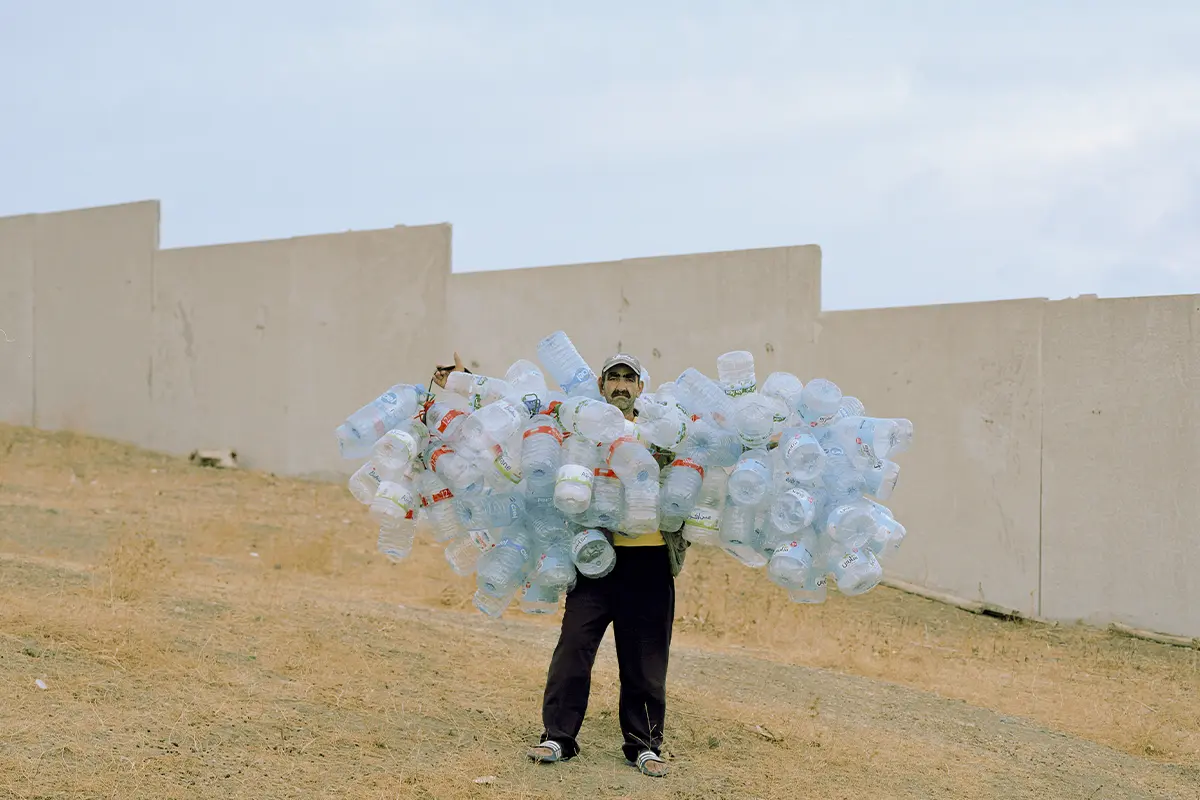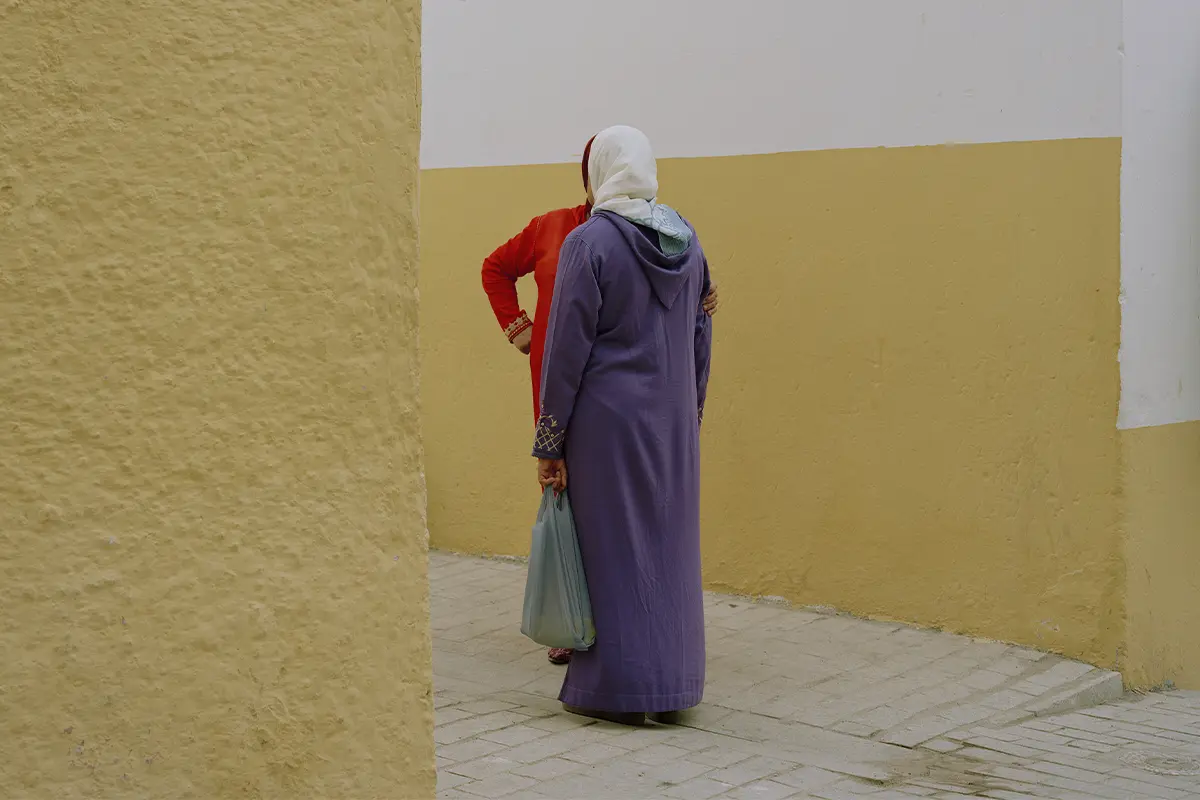In conversation with award-winning Moroccan contemporary photographer Hicham Gardaf, whose eyes examine the transformations of social spaces
Young photographers at the biennial of the MAST Foundation
For the past fifteen years, the MAST Foundation continues to celebrate and herald young photographers through the biennial of the MAST Photography Grant on Industry and Work. The selection brings together the next generation of photographers whose research relates to the vast world of industry, labor, and technology, resulting in a range of finalist projects.
An architectural feat built as part of the Coesia industrial group headquarters’ campus in 2013, the MAST Foundation, based in Bologna, northern Italy, is a private philanthropic institution that focuses on photography, art, technology, and innovation. The multifunctional complex, as well as the exhibition spaces, includes an auditorium, workshop spaces, and services for both the company employees and the public. This year’s photography grant finalists are Farah Al Qasimi (1991, Abu Dhabi), Hicham Gardaf (1989, Tangier), Lebohang Kganye (1990, Johannesburg), Maria Mavropoulou (1989, Athens), and Salvatore Vitale (1986, Palermo).
Photography Grant on Industry and Work
Each finalist presented a project that is currently on show in the MAST Gallery until 1st May 2023, alongside the works of twenty-four finalists from the previous editions. The five finalist projects of 2023 question and investigate the changes surrounding the rapid transformation of the world of work and industry. The jury of seven including the exhibition’s curator, Urs Stahel, came to the decision of naming Hicham Gardaf the winner, and a Special Mention to Lebohang Kganye’s work Keep the Light Faithfully (2022), an original presentation of the tale of female lighthouse keepers in South Africa.
In Praise of Slowness, Hicham Gardaf
Hicham Gardaf’s project titled In Praise of Slowness (2022/23) recalls the bleach street vendors in modern-day Tangier that call out as they pass with their goods for sale, whose presence is an integral part of daily life in the Moroccan city. Gardaf captures moments of an industry in decline, the disappearance of the direct contact between vendors and street life, and the community that is shaped in its surroundings.
Images of carts laden with bottles, men carrying multitudes of plastic containers, women stopped in the street to talk to each other, still lifes of empty tables and colorful walls. The installation includes a 16mm film of the same title, a detailed look into the eyes, hands, and architectures that make up this slower industry; a resistance to the rapid changes that arrive in parallel to modernization.
«My initial thought was to show the film with a sound installation, making use of multiple speakers, to create a sense of the sound traveling through space, a type of labyrinth, where you follow the sound. Since this is a photography prize, I combined photography and film with sound. I don’t have any plans on extending In Praise of Slowness, I would perhaps present the project slightly differently and with more sound effects. For the installation of the exhibition at the MAST Foundation, I wanted to highlight the analog aspects of my work and avoid screens for the film, therefore I decided to build a wall to hide these screens, which works well with the images».
Swiss curator Urs Stahel: Un-nostalgic eulogy
According to the Swiss curator, Urs Stahel, who has been with the Photo Grant since its inception, Gardaf’s latest project «offers an un-nostalgic eulogy to those who fall behind, who decelerate the speed of contemporaneity, and who challenge the disappearance of manual labor or traditional occupations». In Praise of Slowness recalls the photographic research of Scottish photographer John Thomson (1837-1921).
Mainly known for his travel photography in Asia, however, between 1877 and 1878, he worked on the project Street Life in London with socialist journalist Adolphe Smith, as a means of documenting poverty and working life in the British capital. Amongst the images, there are professions that would soon change or disappear with the advancements of the Industrial Revolution, such as chimney sweeps, locksmiths, and shoe shiners.
Tangier, Morocco. The disappearance of tradition
This aspect of documenting the slower side of tradition and manual labor is demonstrated in other project ideas by Gardaf, however shifting from Tangier as a background to Margate in south-east England.
«For the last five years, I have mainly been interested in working with architecture and the changing landscape, primarily looking at the border of the city, urban landscapes, and how the space is in constant flux. I photographed landscapes without humans, and this is an interesting shift because I’m going back to what I did at the beginning when I first started taking pictures. The project I would like to work on is quite specific, it’s about a lock and safe shop in Margate.
I used to pass this shop every day when I used to live in Margate and I found the shop intriguing because all day they would make safes. The shop window would display unusual objects, and this presentation is what first captured my attention, these objects in the window display would change every week. I never entered the space, as I found it intimidating whilst they were working manually on making locks and the safes.
The Poetics of Space by Gaston Bachelard
Then one night I had a dream that I was working in this shop. The next time I passed by I noticed a sign on the front door that read ‘The shop will close permanently after sixty years of service’, this was a family business. I decided to enter and speak to the owner, I found it fascinating how he talked about locks, he was extremely knowledgeable about locks and their history.
During this period, I was reading a book titled The Poetics of Space by Gaston Bachelard, a French philosopher, in which he talks about the different parts of the house, such as corners, and also talks about wardrobes and safes. There was this instant connection between the book and the shop. Unfortunately, the shop owner had to have surgery soon after and this was in the period of isolation, therefore I have yet to start this project».
Gardaf, The Cinnamon Hut (Apparition)
As mentioned prior, Gardaf aims to include several sensory aspects within his works, not necessarily always in the medium of photography, from the sound of street sellers shouting to the use of color to the smell of spices. In continuation with his research surrounding social spaces, landscapes, and consequential human use, in 2021 Gardaf presented The Cinnamon Hut (Apparition).
The work consisted of a simple structure to form the frame of a shelter made from wool and cinnamon sticks, the work recalls the memories of home and childhood, which influence our adult lives; the use of smell triggers instant strong memories of intimacy, warmth, and protection for the artist, even resulting in a feeling of homesickness.
«I am also interested in sound, I want to make sound pieces in the absence of any images. I have worked on images in relation to power cuts we would experience when I was younger, suddenly there would be no electricity, we would all be sitting in the dark, and slowly you start to hear sounds from outside. The sense of hearing becomes more amplified. I like the idea of how different people navigate their homes in the dark when these are spaces that are known off by heart».
Hicham Gardaf
Born in 1989, Hicham Gardaf is a self-taught contemporary photographer from Tangier, Morocco, who currently lives and works in London. He participated in the Open School East’s Associates Programme based in Margate, UK. Gardaf’s photographs and installations have been shown at Guest Projects in London; Museum of African Contemporary Art Al Maaden in Marrakech; Beit Beirut in Beirut; La Friche La Belle de Mai in Marseille; Bibliothèque Nationale de France and Institut du Monde Arabe in Paris.




















